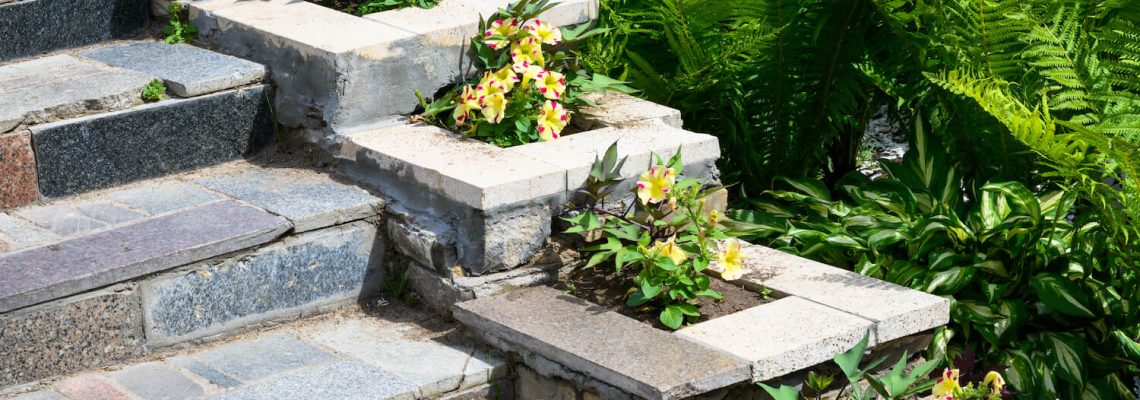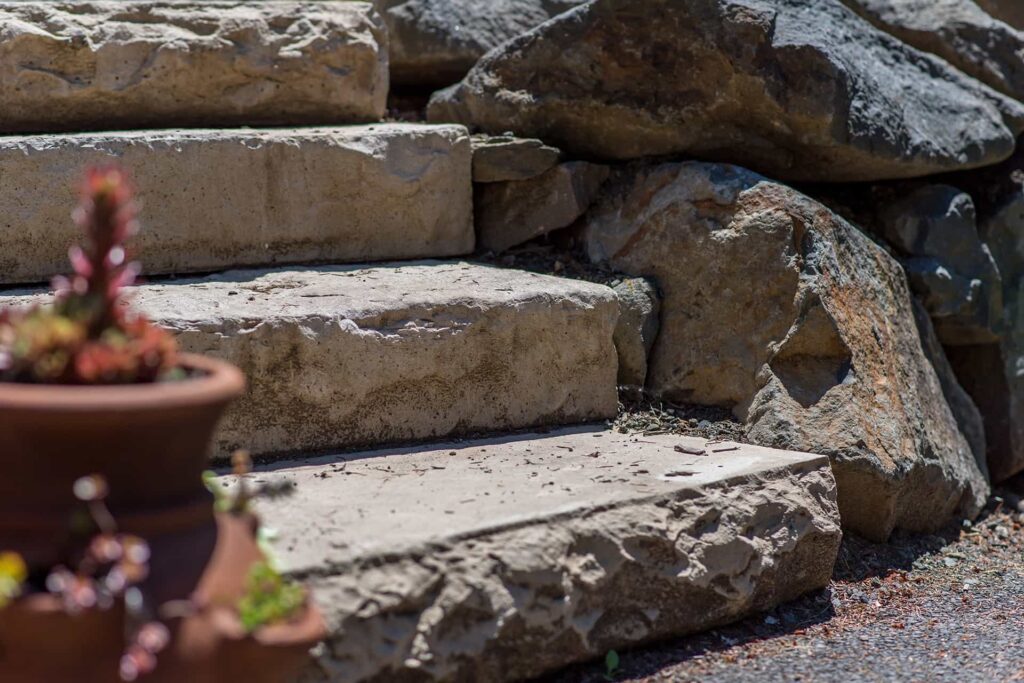Creating a visually appealing and functional pathway involves careful consideration of various elements, and one crucial aspect is choosing the right stones for your steps. Whether you are designing a garden walkway, an entrance path to your home, or a trail through a natural landscape, selecting the appropriate stones can greatly impact the overall aesthetics, durability, and safety of your pathway.
In this guide, we will delve into the key design factors to consider when choosing stones for your steps, helping you navigate the path to a well-designed and long-lasting stone step walkway.
Design Aesthetics and Style
The first consideration when choosing stones for your steps is the aesthetic appeal and style you want to achieve. Different types of stones come in various colors, shapes, and textures, allowing you to create a pathway that complements the overall design of your outdoor space.
- Colors: Consider the color scheme of your surroundings and choose stones that either contrast or harmonize with the existing elements. Earthy tones like beige, brown, and gray can provide a natural look, while vibrant colors may add a touch of uniqueness.
- Shapes: Stones come in a variety of shapes, from irregular and rustic to uniform and cut. The shape of the stones can influence the overall feel of the pathway. For a more natural and informal look, irregular shapes may be preferable, while cut stones can lend a formal and polished appearance.
- Textures: The texture of the stones plays a crucial role in both aesthetics and safety. Smooth stones may be visually appealing but can be slippery, especially in wet conditions. Consider the functionality of the pathway and choose a texture that suits your needs.
Durability and Maintenance
The longevity of your pathway depends on the durability of the stones you choose. Different types of stones have varying levels of resistance to weathering, foot traffic, and other environmental factors.
- Hardness: Some stones are naturally harder and more resistant to wear and tear. Granite and bluestone, for example, are known for their durability and are suitable for high-traffic areas. Softer stones like limestone and sandstone may be prone to chipping and erosion over time.
- Weather Resistance: Consider the climate in your area. Certain stones are better equipped to withstand harsh weather conditions, including extreme temperatures, rain, and snow. Ensure that the stones you choose can withstand the elements to maintain their appearance and structural integrity over the years.
- Maintenance: Different stones require different levels of maintenance. While some stones may only need periodic cleaning, others may require sealing or treatment to protect them from stains and deterioration. Factor in the time and effort you are willing to invest in maintaining your pathway.
Size and Thickness
The size and thickness of the stones you choose for your steps can impact both the visual appeal and the practicality of the pathway.
- Size: The size of the stones should be proportionate to the overall scale of the pathway and the surrounding landscape. Large stones can create a bold and dramatic effect, while smaller stones may impart a more intricate and detailed look.
- Thickness: The thickness of the stones is crucial for the stability and safety of the steps. Thicker stones are generally more durable and less likely to crack or break under pressure. Consider the weight-bearing capacity required for the specific use of your pathway.
Safety Considerations
Safety is paramount when designing pathways, especially if they are intended for regular use. The choice of stones can significantly influence the safety of your steps.
- Slip Resistance: As mentioned earlier, the texture of the stones is critical for slip resistance. Smooth stones may pose a slipping hazard, especially in wet conditions. Opt for stones with a textured surface or add a non-slip coating to enhance safety.
- Evenness: Ensure that the stones are set evenly to prevent tripping hazards. Irregularities in height or uneven spacing can create stumbling points. Professional installation or careful attention to detail during the DIY process is essential for a level and safe pathway.
- Lighting: Consider incorporating lighting into your pathway design to enhance safety during the evening or night. Illuminating the steps with strategically placed lights can prevent accidents and add a decorative element to your outdoor space.
Stone Budget Considerations
Your budget is a practical constraint that should be factored into the decision-making process. Different types of stones come with varying price tags, and additional costs such as installation and maintenance should also be considered.
- Stone Costs: Research the cost of different types of stones per square foot and calculate the total cost based on the size of your pathway. Keep in mind that high-quality and durable stones may have a higher initial cost but can save you money in the long run by requiring less maintenance and replacement.
- Installation Costs: If you plan to hire professionals for the installation, get quotes from different contractors to understand the installation costs. If you choose to undertake the project yourself, be sure to factor in the cost of tools and materials needed for proper installation.
- Long-Term Costs: Consider the long-term costs associated with maintenance, repairs, and potential replacements. Investing in high-quality stones upfront may result in fewer expenses over time.
Compatibility with Natural Surroundings:
Harmony with the surrounding landscape is key to creating a visually pleasing pathway. The stones you choose should complement the existing elements in your garden or outdoor space.
- Landscape Integration: Consider the overall design of your landscape and how the chosen stones will integrate with existing features such as gardens, lawns, and other hardscape elements. The goal is to create a cohesive and unified aesthetic.
- Architectural Style: If your pathway leads to a specific structure, such as your home or a garden feature, ensure that the chosen stones align with the architectural style. This cohesiveness enhances the overall appeal of your outdoor space.
- Natural Elements: Pay attention to the natural elements present in your surroundings, such as trees, plants, and bodies of water. The chosen stones should complement these features rather than compete with them.
Testimonials and Reviews:
Before finalizing your decision, seek out testimonials and reviews from others who have used the same stones for their pathways. Learning from their experiences can provide valuable insights into the performance and longevity of the chosen materials.
- Online Reviews: Browse online platforms, forums, or social media groups where homeowners and landscaping enthusiasts share their experiences. Look for reviews related to durability, maintenance, and overall satisfaction with the chosen stones.
- Professional Recommendations: If you’re working with a landscaping professional or contractor, ask for their recommendations based on their experience. Professionals often have firsthand knowledge of how different stones perform in various environments.
- Site Visits: If possible, visit locations where the stones you are considering have been installed. Observing the stones in real-world applications can give you a better understanding of their appearance and performance over time.
Flexibility in Stone Steps Design
Choosing stones that offer flexibility in design allows you to create a unique and customized pathway that suits your preferences. Some stones can be cut or arranged in different patterns, providing versatility in your design choices.
- Cutting and Shaping: Some stones, like flagstone or slate, can be easily cut into specific shapes to accommodate intricate designs or curves. This flexibility is especially beneficial if you have a unique vision for your pathway.
- Pattern Options: Explore different laying patterns, such as herringbone, basket weave, or random mosaic. The pattern you choose can significantly impact the visual appeal of your pathway, adding an extra layer of customization.
- Mixing Materials: Don’t be afraid to mix different types of stones or combine stones with other materials like gravel or ground cover plants. This can add texture and visual interest to your pathway.
Future Project Expansion and Stone Maintenance:
Anticipate future needs and potential expansions when selecting stones for your steps. Planning for growth and ensuring ease of maintenance will contribute to the longevity and adaptability of your pathway.
- Future Additions: If you foresee future expansions or additions to your outdoor space, choose stones that can be seamlessly integrated into new sections of the pathway. This foresight prevents the need for significant modifications later on.
- Accessibility: Consider the accessibility of your pathway, especially if your needs may change over time. Ensure that the chosen stones can accommodate features like ramps or handrails if required.
- Maintenance Planning: Develop a maintenance plan that includes regular cleaning, sealing, and inspection. Proper care can extend the life of your pathway and minimize the need for major repairs or replacements.
Stone Steps Conclusion
Selecting the best stones for your steps involves a holistic approach that considers natural aesthetics, durability, safety, budget, and environmental impact.
By taking the time to assess your specific needs and the unique characteristics of different stones, you can create a pathway that not only enhances the beauty of your outdoor space but also withstands the test of time. Remember that the journey of choosing the right stones is as important as the destination – a well-designed and enduring pathway that adds both functionality and charm to your home. As you navigate this path of decision-making, let your creativity and practical considerations guide you toward a choice that aligns perfectly with your vision for the ideal outdoor space.


